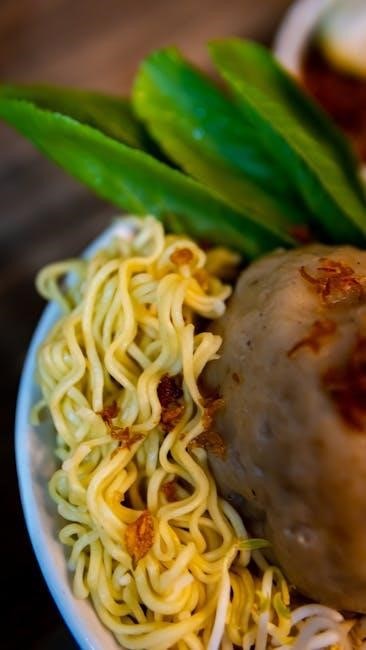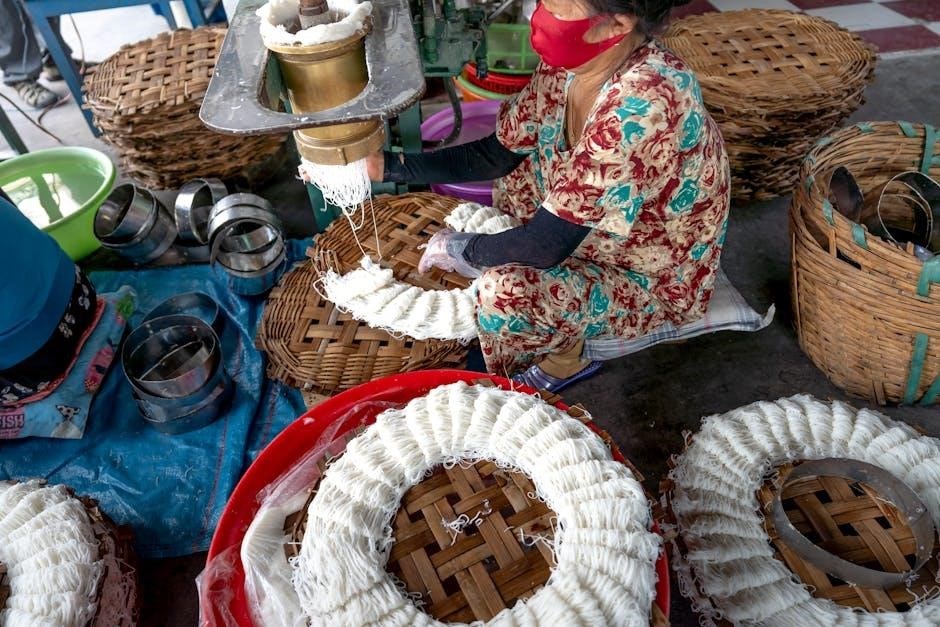Salton Rice Cooker Instruction Manual: A Comprehensive Guide
Welcome! This comprehensive guide will aid you in mastering your Salton rice cooker. Whether a novice or expert, understanding its features ensures perfectly cooked rice every time. Maximize your rice cooker’s potential with these instructions, enhancing your cooking experience.
Understanding Your Salton Rice Cooker Model
Before your culinary journey begins, familiarize yourself with your Salton rice cooker model. Salton offers various models, like the Elite SRMS01E, RC1653, RC-1211, RC2126, and RC2129, each possessing unique features. Identifying your model is crucial for accessing specific instructions and troubleshooting tips.

Consult your device to locate the model number, typically found on the base or the back panel. Online searches using your model number will reveal detailed specifications and downloadable manuals. Manuals provide insights into your cooker’s heating system, control panel functions (like “Cook” and “Warm”), and included accessories such as steaming baskets.
Understanding these aspects enables you to utilize your rice cooker optimally. For instance, the RC1653 features a user-friendly two-button control panel and a non-stick cooking bowl for effortless cleanup. Knowing these details will streamline your cooking process and ensure safe, efficient operation, enhancing your overall experience.
Initial Setup and Preparation
Before using your Salton rice cooker, proper initial setup is essential. Begin by unpacking all components and verifying their presence against the manual’s inventory list. Remove any protective films or packaging materials from the cooker’s body, inner pot, and lid.

Wash the inner cooking pot and lid with warm, soapy water, ensuring thorough rinsing to eliminate any manufacturing residues. Avoid abrasive cleaners that could damage the non-stick coating of the inner pot. Dry both components completely before reassembling.
Place the rice cooker on a stable, level surface away from water sources. Ensure adequate ventilation around the cooker to prevent overheating. Before plugging in, confirm that the voltage indicated on the cooker matches your local electrical supply.
For optimal performance, pre-heating the inner pot is unnecessary. However, adding a small amount of water and running a test cycle can help familiarize yourself with the cooker’s operation. This initial setup guarantees safe and efficient use, laying the foundation for countless perfectly cooked meals.
Cooking Different Types of Rice
Your Salton rice cooker excels at preparing various rice types, each demanding slightly different approaches. For white rice, rinse it under cold water to remove excess starch, resulting in fluffier grains. Brown rice benefits from a longer soaking period before cooking to soften the bran layer.
Jasmine rice, known for its aromatic fragrance, requires a delicate touch; avoid over-rinsing to preserve its unique scent. Sticky rice, often used in Asian desserts, needs minimal water and careful monitoring to prevent sticking. Wild rice, technically a seed, demands the most extended cooking time and a higher water ratio.
Experimenting with different water-to-rice ratios is key to achieving desired textures. Consult the included guide for recommended proportions, but adjust based on personal preference. Some models feature pre-programmed settings for specific rice types, simplifying the cooking process.

Regardless of the variety, ensure even distribution of rice within the inner pot for uniform cooking. Avoid lifting the lid frequently during cooking, as this releases steam and affects the final result. With practice, you’ll master the art of cooking diverse rice types to perfection.
Rice-to-Water Ratio Guide
Achieving perfectly cooked rice relies heavily on the correct rice-to-water ratio. This ratio varies depending on the type of rice you are preparing. Generally, white rice requires a 1:1 ratio, meaning one cup of rice to one cup of water. However, brown rice typically needs a 1:1.5 or even 1:2 ratio due to its bran layer.
Jasmine rice benefits from slightly less water, around a 1:0.75 ratio, to prevent it from becoming too sticky. Sticky rice, conversely, requires a 1:1 ratio but may need additional water if it appears dry during cooking. Wild rice often needs a 1:2.5 or 1:3 ratio to ensure it cooks through completely.
Using the measuring cup provided with your Salton rice cooker ensures accurate measurements. For best results, always use cold, filtered water. After adding the rice and water, gently stir to distribute the rice evenly. Avoid adding excess water, as this can lead to mushy or undercooked rice.
Experimentation is key to finding the perfect ratio for your specific preferences and the rice you are using. Keep a record of your adjustments to replicate successful results in future cooking sessions. Regularly checking the rice during cooking helps fine-tune the water level.
Operating the Cook and Warm Functions
Your Salton rice cooker features two primary functions: Cook and Warm. The Cook function initiates the rice cooking process, automatically switching to Warm once the rice is cooked. To begin, ensure the inner cooking pot is properly placed inside the rice cooker. Add the desired amount of rice and water, following the recommended rice-to-water ratio for your rice type. Close the lid securely.
Plug the rice cooker into a power outlet. Press the “Cook” button or lever to start the cooking cycle. A light indicator typically illuminates to confirm the cooker is in Cook mode. The cooking time varies depending on the rice type and quantity. Once the rice is cooked, the rice cooker automatically switches to Warm mode.
The Warm function keeps the rice at a safe and optimal serving temperature for several hours. A separate indicator light usually confirms when the cooker is in Warm mode. Avoid leaving the rice in Warm mode for extended periods (more than a few hours) to prevent it from drying out or developing an off-flavor.
To turn off the rice cooker completely, unplug it from the power outlet. Never attempt to manually switch the rice cooker from Cook to Warm before the rice is fully cooked, as this can result in unevenly cooked rice. Always allow the rice cooker to complete its cycle.
Cleaning and Maintenance
Proper cleaning and maintenance are vital for prolonging the life of your Salton rice cooker and ensuring safe operation. Always unplug the rice cooker and allow it to cool completely before cleaning. The inner cooking pot is typically non-stick and should be washed with warm, soapy water using a non-abrasive sponge or cloth. Avoid using steel wool or harsh scouring pads, as they can damage the non-stick coating.
The rice cooker’s body can be wiped clean with a damp cloth. Ensure no water enters the electrical components. The lid, if removable, should also be washed with warm, soapy water. Pay close attention to cleaning the steam vent, as rice particles can accumulate there.
For stubborn stains or burnt-on rice, soak the inner cooking pot in warm, soapy water for a few hours before cleaning. A mixture of baking soda and water can also help remove tough stains. Rinse all parts thoroughly with clean water and dry them completely before reassembling the rice cooker.
Regularly check the power cord for any signs of damage. If the cord is damaged, it should be replaced by a qualified technician. Store the rice cooker in a cool, dry place when not in use. Avoid storing it with the lid closed to prevent moisture buildup.

Troubleshooting Common Issues
Encountering issues with your Salton rice cooker? This section addresses common problems and offers potential solutions; If the rice cooker doesn’t turn on, first ensure it’s properly plugged into a functioning outlet. Check the power cord for any damage. If the cooker still doesn’t power on, the thermal fuse may have blown, requiring professional repair.
If the rice is undercooked, you may have used insufficient water or the cooking time was too short. Refer to the rice-to-water ratio guide and adjust accordingly. For overcooked or burnt rice, reduce the water amount or cooking time in subsequent attempts. Ensure the rice cooker is placed on a level surface for even cooking.
If the rice cooker switches to “warm” mode prematurely, there might be too little water in the pot. Adding a small amount of water and restarting the cooking cycle might resolve this. Excessive steaming or splattering could indicate overfilling the pot. Reduce the rice and water quantity to prevent overflow.
If you notice an unusual odor, thoroughly clean the rice cooker, including the lid and steam vent, to remove any trapped food particles. If the problem persists, contact Salton customer support for assistance. Always prioritize safety and avoid attempting repairs beyond your expertise.
Safety Precautions
Prioritize safety when using your Salton rice cooker to prevent accidents and ensure longevity. Always read the instruction manual thoroughly before the first use. Never immerse the rice cooker base in water or other liquids, as this could cause electric shock. Use only the provided rice cooking bowl and avoid placing it on other heat sources.
Ensure the rice cooker is placed on a stable, level surface away from flammable materials. Keep children away from the appliance during operation, as the exterior surface becomes hot. Do not touch hot surfaces; use oven mitts or pot holders when handling the rice cooking bowl or lid.
Unplug the rice cooker when not in use and allow it to cool completely before cleaning. Never use abrasive cleaners or scouring pads, as they can damage the non-stick coating. Regularly inspect the power cord for damage and replace it if necessary. Do not operate the rice cooker if the cord or plug is damaged.
Avoid using the rice cooker for purposes other than cooking rice and steaming food. Never attempt to repair the appliance yourself; contact a qualified technician for repairs. Always supervise the rice cooker during operation and never leave it unattended. Following these safety precautions will help you enjoy your Salton rice cooker safely and effectively.
Exploring Versatile Cooking Options Beyond Rice
Your Salton rice cooker is more than just a rice-cooking appliance; it’s a versatile tool that can handle various culinary tasks. Embrace its capabilities to prepare soups, stews, and even one-pot dinners with ease. The automatic keep-warm function ensures your dishes remain at an ideal serving temperature until you’re ready to enjoy them.
Consider using your rice cooker to steam vegetables, creating a healthy and convenient side dish. The steaming basket, often included with the rice cooker, allows you to cook vegetables while preserving their nutrients and flavors. You can also prepare oatmeal, porridge, or congee for a comforting breakfast or snack.
Experiment with slow-cooking recipes, allowing the rice cooker to gently simmer ingredients for hours, resulting in tender and flavorful meals. Prepare dishes like chili, pulled pork, or even a simple tomato sauce. With a bit of creativity, your Salton rice cooker can become an indispensable tool for preparing a wide range of delicious and convenient meals.
Remember to adjust cooking times and liquid ratios according to the specific recipe and ingredients. Always monitor the cooking process and ensure the rice cooker doesn’t overheat. With practice, you’ll discover the full potential of your Salton rice cooker and expand your culinary repertoire.
